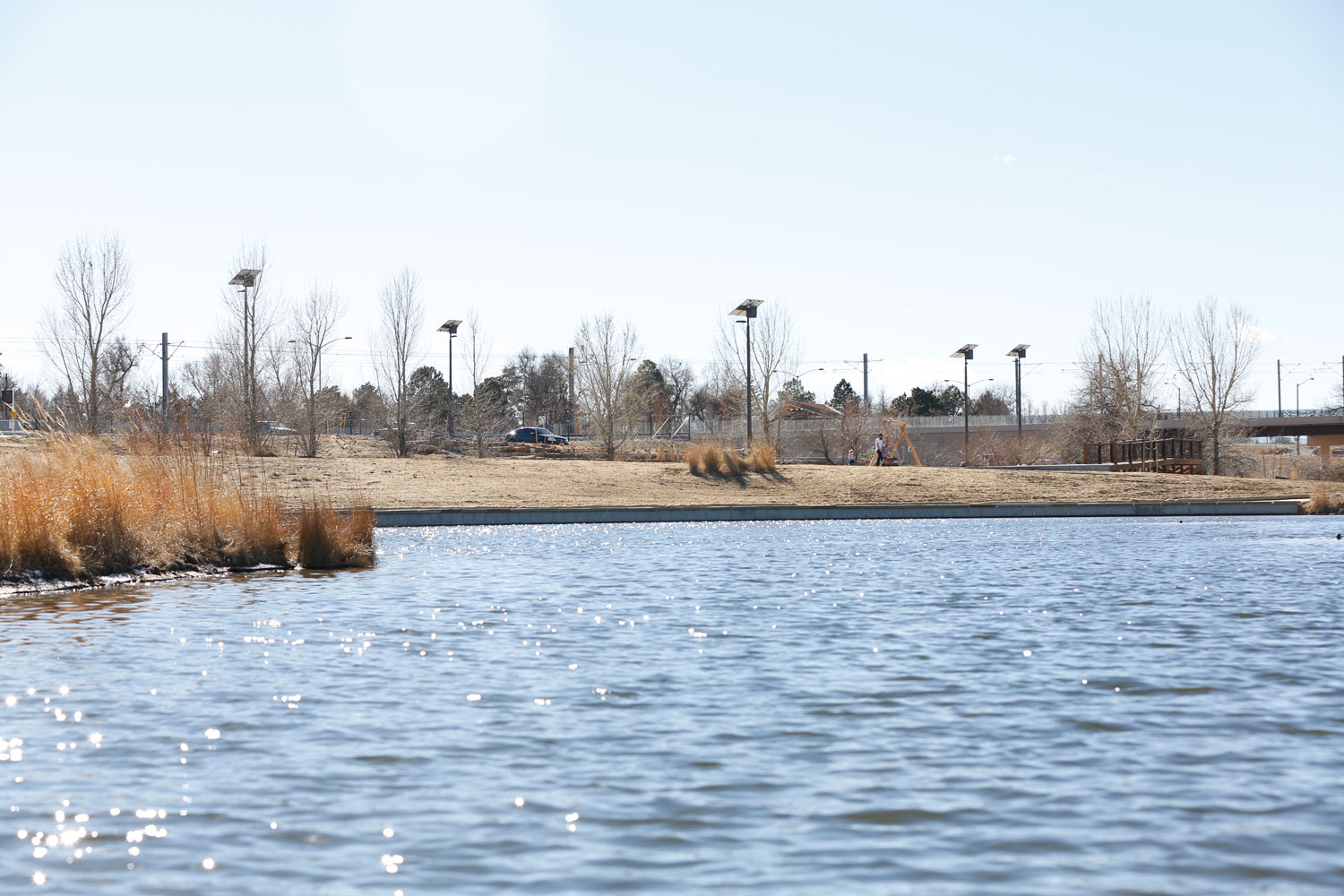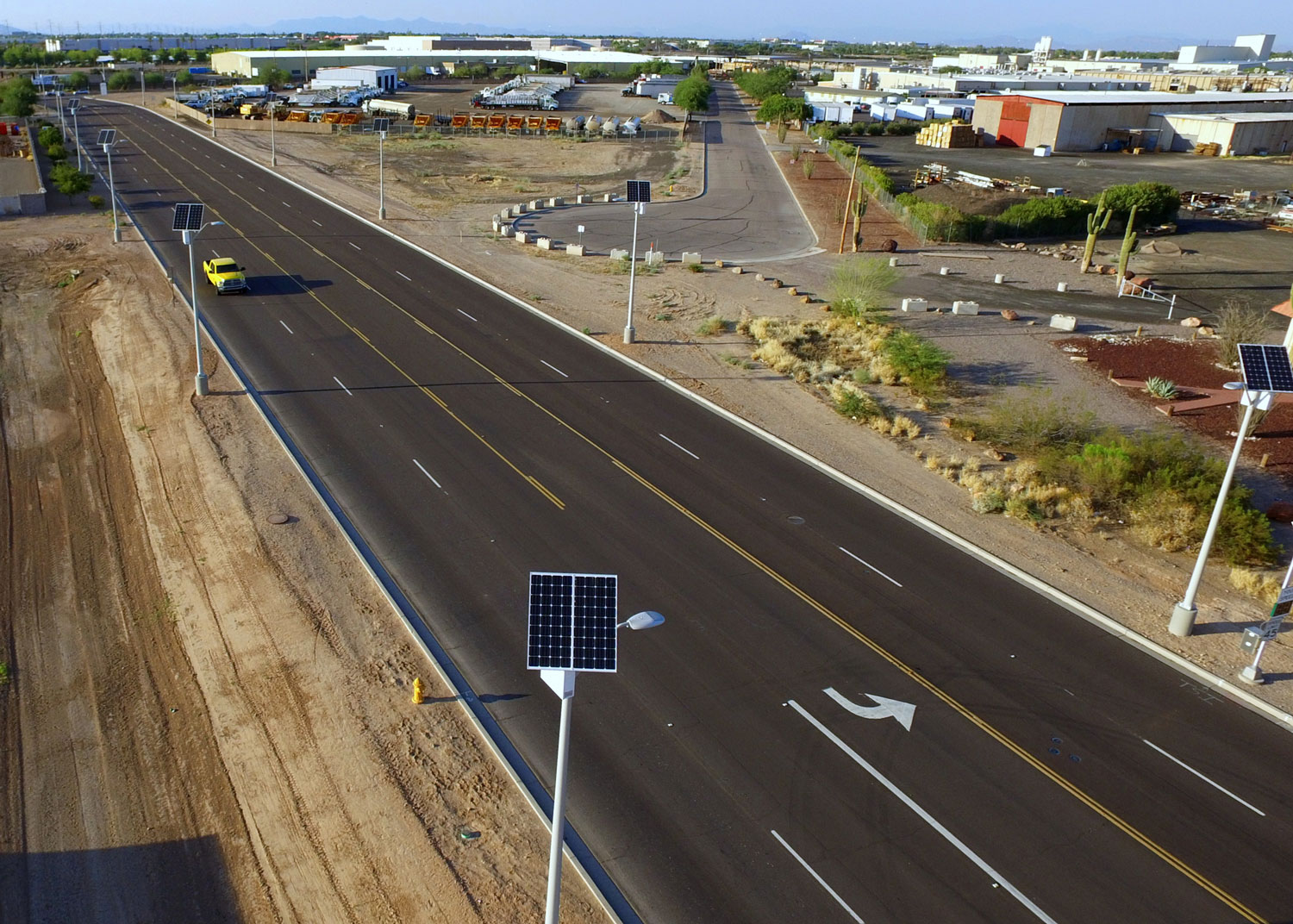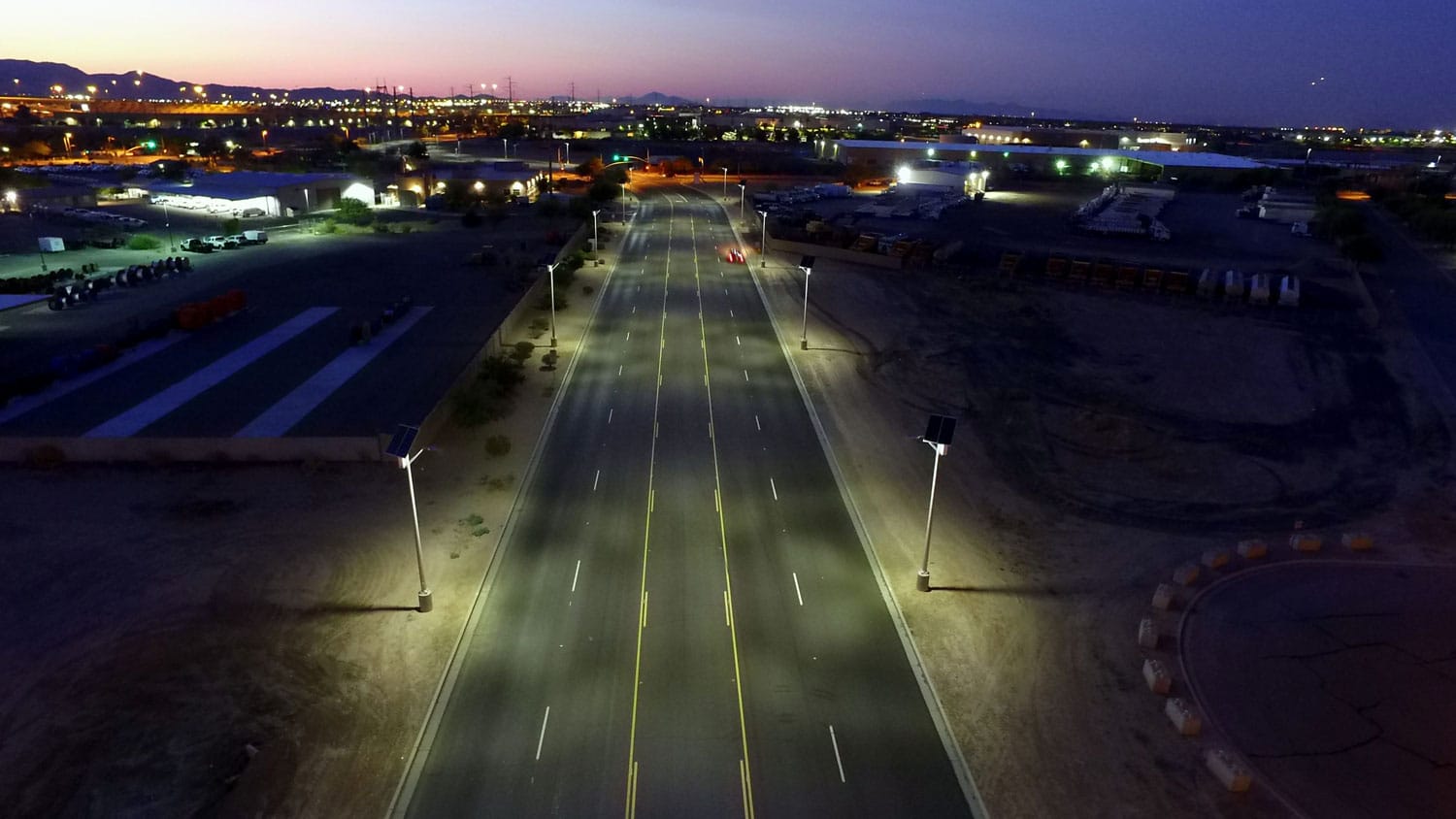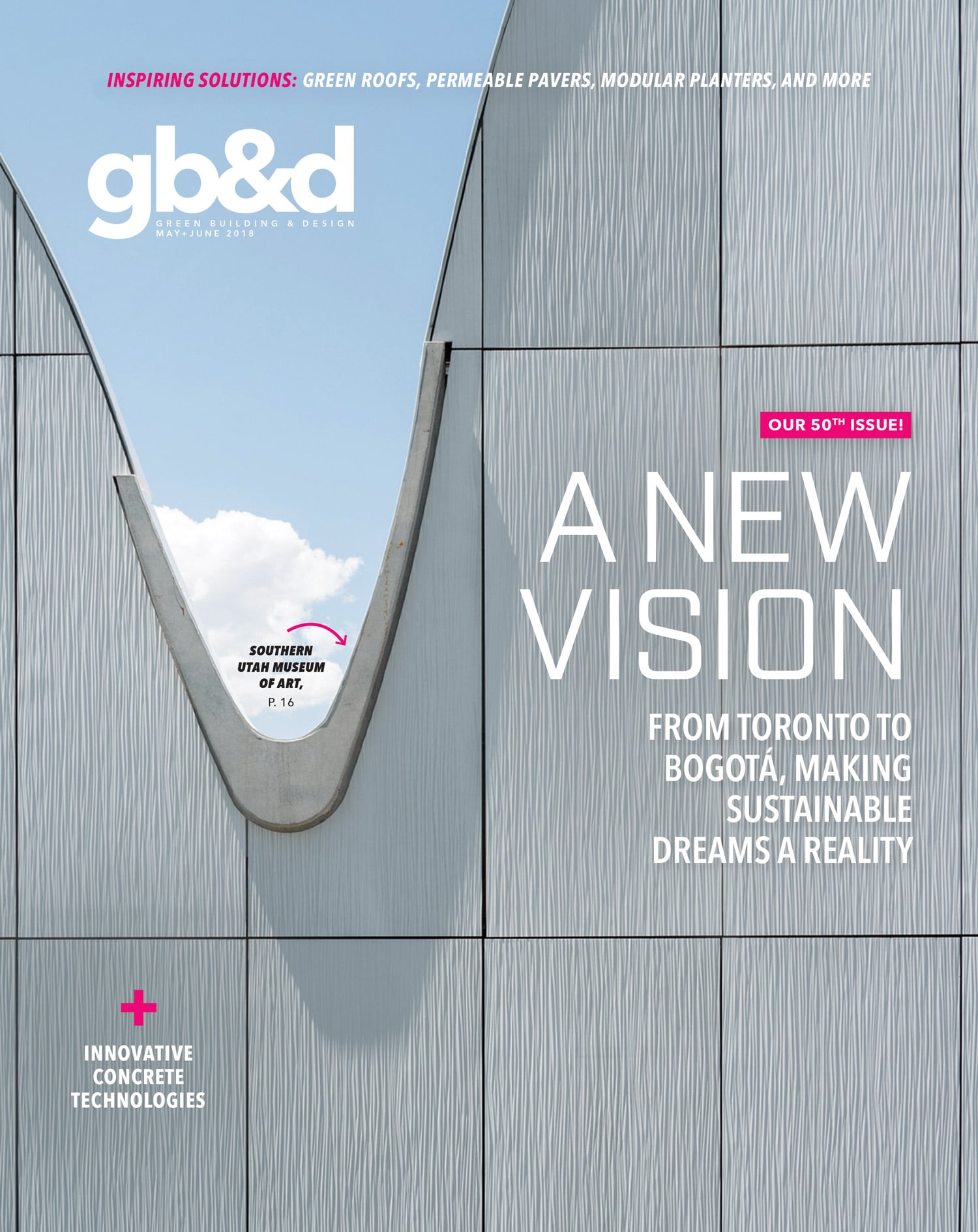Today’s solar lighting technology challenges the traditional lighting status quo by offering light with no compromise.

[Photo: Courtesy of Sol]
When the city of Aurora, Colorado, revisited its master plan for Sand Creek Park before re-opening in late 2017, it was clear people didn’t want to do anything to distract from the natural beauty of the park. The city developed a plan for the park, alongside a new light rail station, that not only included native plant life and a revitalized playground made from natural materials—it also included environmentally friendly solar-powered lighting.
But why solar? The city discovered a standard lighting solution for the park and adjoining parking lot would be challenging; the closest grid connection was on the other side of the light rail tracks, making it inaccessible, and trenching power lines to the next closest grid connection would be prohibitively expensive, according to Nicole Horst, principal at Wenk Associates, the landscape architecture and planning firm that designed the park.
So they turned to Sol, a subsidiary of Carmanah Technologies, for a technologically advanced solar solution that met their needs at a comparable price, without sacrificing light performance, component durability, or system reliability compared to traditional on-grid lighting.
A Better Commercial Light
In the U.S., some have been slow to adopt solar-powered outdoor lighting because AC grid access in the past was generally affordable, or the cost difference between solar- and AC-powered lighting systems was too big to justify—not to mention poorly designed older technology often made it unreliable. Too many compromises had to be made to rationalize using it.
Today, many cities are making a conscious choice to use solar for other reasons than being green. One reason is financial—with traditional lighting costs on the rise, more people are looking to solar. “The cost of on-grid electricity generated from coal and nuclear sources continues to increase on average,” says Damien Hortsing, a technical sales specialist for Sol. For instance, the Institute for Energy Research reports that in Colorado, the average electricity price increased 67% from 2000 to 2014. “That’s making solar viable for a greater share of projects than before,” Hortsing says. “It’s gaining momentum across the board—for both streets and parks.”
FROM OUR MAY+JUNE 2018 ISSUE
The preferred publication of leading green professionals.

[Photo: Courtesy of Sol]
A Smarter Solar Package
Cities and developers that do make the shift are looking for a reliable product to compete with the light performance, component durability, and system reliability of traditional products. Technology like Sol’s new EverGen M Series is key. A combination of better solar panels; high efficacy, lab-tested LED luminaires; a 10-year battery; and a unique energy management system (the brain of the light) ensure the EverGen can provide light every night of the year at the required light levels—with no compromise on performance. “As solar technology matures, you get better quality systems at lower prices,” Hortsing says.
Meanwhile, these physical pieces of the system are built to custom specification—nothing comes straight off the shelf. “For it to last a long time, we use high-quality components,” Hortsing says. “Everything is designed to work together.”
Sol prides itself on building a product that is optimized to work in a given location over the long term. They use compact panels that collect enough solar energy on even the darkest days to provide light through the night. “How we size—or configure—our systems [is] a critical part of a successful solar project,” Hortsing says. “We can determine how much sun each site receives by looking at 20 years of data, which we use to select the exact configuration of components that will work best for that location. As manufacturers, this gives us confidence that the product will perform as designed for years to come.”

Solar lights from Sol have been transformative in Chandler, Arizona. [Photo: Courtesy of Sol]
A Closer Look at EverGen
The first installation of EverGen lights was in November 2017, when the city of San Jose, California, installed four in a local park. The city aims to comply with the Paris Agreement, and this installation was an important step toward reducing greenhouse gas emissions.
Meanwhile, officials in Aurora used the EverGen to solve the problem of challenging grid access. “[Aurora has] been really happy with it,” Horst says. She says the biggest misconceptions about solar lighting concern longevity, reliability, and battery life. But this reliable innovation builds on 20-plus years of innovation from the company, further expanding on an already durable product.
Just look, for example, at a project in Wray, Colorado. More than 10 years ago, 71 of Sol’s lights were installed there along the Republican River Trail. That project has required little maintenance—needing only recent battery changes—and survived hailstorms, snow, and other fierce weather unscathed. “Our electric department has been very pleased,” says James DePue, Wray’s city manager. “The maintenance has been very minimal over the last 10 years. We also would have had a larger ongoing cost with electrical energy [on the grid], absolutely.”
Building on this earlier technology to create something better is the main reason today’s EverGen is often on par with grid-connected lighting. “That’s helped us open the door for a greater range of projects than ever before,” says Hortsing. “Whether you’re trying to light a path or a street or a parking lot, your solar light should work every night, just like a traditional light does. We’ve made that happen.”

[Photo: Courtesy of Sol]
Build & Price Comparisons
Sol’s website includes a handy Build & Price tool, where you can input the location and dimensions of a project, get a price quote, and then compare the number to the cost of the incumbent electrical solution.
It’s a great way to examine the options and start collaborating, whether you’re working on a local street or connector roadway, a bike path or sidewalk, a parking lot or national park, or even industrial facilities. solarlighting.com/build

